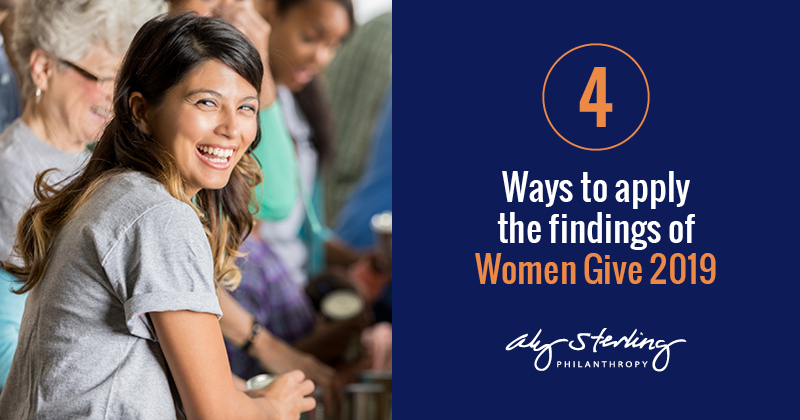
By Jen Pendleton, CFRE – vice president-Indiana, Aly Sterling Philanthropy
A report released last month by the IUPUI Women’s Philanthropy Institute validates what we’ve long observed: Generosity is not limited by race, ethnicity or gender.
The report, Women Give 2019, finds that generosity is a value shared by all communities, and that women across race and ethnicity are leading through philanthropy.
There’s more to the study, including the unique perspectives of women of color as well as information about how income and wealth disparity affect giving. However, the overall message is an important one: the face of philanthropy is diverse.
Seeing the real face of philanthropy requires us to drop our assumptions and preconceived notions about who gives. Generosity is a universal human trait and our nonprofits will benefit from increased gifts of time, talent and treasure when we invite donors and volunteers of all kinds to the table.
Here are some key findings from Women Give 2019:
- Households across all racial groups give, particularly those of high net worth.
- Households across all racial groups give to similar causes, including both secular and religious.
- A donor’s race does not have a significant effect on the amount given to charity when taking income and other factors into account.
- Overall gender differences appear consistent across racial groups. For all groups, single women are more likely than single men to give to charity. Married and cohabitating couples are more likely to give than single men and single women.
- The overall trend of married couples giving more than singles, and single women giving more than single men, is consistent across race.
- While communities of color appear to be less engaged in formal volunteering, other research has shown that informal volunteering rates (giving time, but not via a formal program or organization) are higher in communities of color.
The report tells us that people are generous regardless of race or ethnicity. And people of color, especially women, are philanthropic, however they may give in different ways to different causes.
At Aly Sterling Philanthropy (ASP), we believe this means society’s image of who is a philanthropist must continue to change and include more diverse experiences and viewpoints.
Here are four ways you can apply the report’s findings in your organization:
ASP recommendation #1
This as an opportunity for your organization to pause to observe whether the leadership around the board table adequately reflects both the constituencies you serve and those who give. If it does not, determine what perspectives are needed to be truly representative of your communities.
Donors of color are as likely to give but are not engaged as often or with the same depth as white donors.
ASP recommendation #2
When donors aren’t engaged, many times it’s simply because they haven’t been invited or an organization hasn’t appealed to their interests. When you diversify your board representation, be sure to also put everyone’s skills, talents and perspectives to work creating new strategies. It isn’t just enough to have the representation; you must also provide a mechanism for people to act and have meaningful experiences.
Nonprofits that want to attract more diverse volunteers must be intentional. They must develop specific strategies around inclusion and build expansive networks with a diverse group of people and perspectives.
ASP recommendation #3
This starts with not recruiting the same people. So often organizations are afraid to lose institutional knowledge when what they really need is an infusion of new people and ideas. We need to realize it’s not the loss of institutional knowledge that holds us back, it’s a lack of fresh thought and perspective.
To create this type of culture, look to groups directly connected to underrepresented communities.
ASP recommendation #4
Look to those who already give to you, support you, work on programs with you. Invite them in for a conversation – see what they have to say about the direction of the organization. Tell them your organization needs their voices at the table.
Who’s missing from your volunteer leadership and donor list? Who’s there but may be overlooked?
Now is the time to invite all of the faces of philanthropy into your organization. Don’t think of it as a challenge, see it as an opportunity to strengthen your mission now and for the future.
Have questions or don’t know where to start? We can help. Contact us to get started.